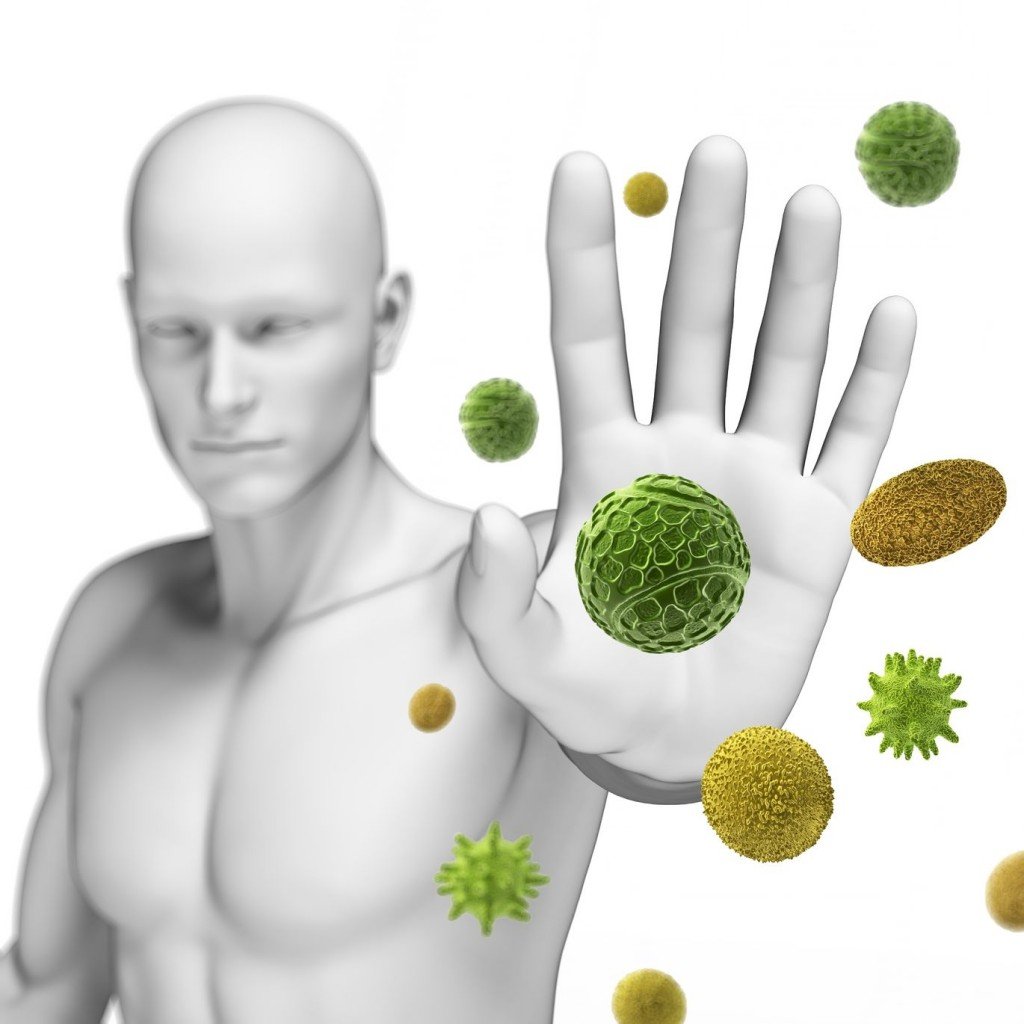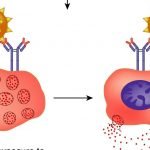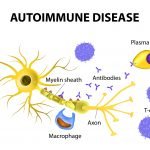Amanda Hegnauer, ND
To discuss the importance of how food allergies or autoimmunity are influenced by the immune system, one must have a basic understanding of the system itself. The immune system is a network of cells, tissues, and organs that work together to protect the body from infection. The human body provides an ideal environment for many microbes, such as viruses, bacteria, fungi, and parasites. The immune system prevents and limits their entry and growth in order to maintain optimal health.
Our immune systems are able to distinguish between healthy cells and unhealthy cells (infected or damaged cells) by recognizing danger signals called danger-associated molecular patterns (DAMPs). Pathogens such as viruses and bacteria release another type of danger signal, called pathogen-associated molecular patterns (PAMPs); these are also recognized by our immune system. When signals are first recognized, the immune system should respond to deal with the problem. A deficient immune response can result in problems like infection. On the other hand, an activated immune response in the absence of a real threat, or the persistence of an immune response despite the passing of a threat, can lead to problems such as allergic reactions and autoimmune disease.1
Immune Cells and Their Functions
Numerous cells are involved in the immune system.2 One of these categories of cells is dendritic cells (DC), which is a type of antigen-presenting cell (APC). Antigens are molecules from host cells, allergens, and pathogens that have been made into “readable” fragments by APCs that can be recognized by B or T lymphocytes. Following an initial response to a specific antigen, adaptive immune cells acquire immunological memory. However, this process of T-cell activation by antigens depends on the presentation of the appropriate major histocompatibility complex (MHC) expressed on the APC. It is this MHC that enables immune cells to differentiate between host cells and foreign cells.
Now, to “B” more specific… The function of B cells is 2-fold: they present antigens to T cells, and they also produce antibodies that help neutralize infectious microbes. The coating of the surface of a pathogen by antibodies leads to neutralization, opsonization, and the activation of complement.
Neutralization means that the antibody-coated pathogen cannot bind to and infect host cells. In opsonization, an antibody-bound pathogen alerts neutrophils and macrophages to engulf and destroy the pathogen. Complement activation results in an inflammatory process aimed at directly destroying pathogens.
Categories of antibodies (or immunoglobulins, or Ig) include IgM, IgD, IgG, IgA and IgE. While these immunoglobulins have overlapping roles, they also have unique roles: IgM is used in complement activation; IgD helps activate basophils; IgG is involved in neutralization, opsonization, and complement activation; IgA is the primary neutralizing antibody in the gastrointestinal tract; and, lastly, IgE is involved in the activation of mast cells during immune responses to parasites and allergens.2
The gut, the immune system, allergy, and autoimmune disease are all tied together. The body is a biochemical masterpiece. The food one takes in is immediately broken down through a number of biochemical interventions. If a person has a food allergy or sensitivity, the immune system kicks in and labels, say, delicious zucchini bread, as a foreign antigen, and mounts an immune response.
Immune-mediated reactions to foods, or food allergies, are divided into IgE- and non-IgE reactions. An anaphylactic reaction to an ingested food is a life-threatening condition due to swelling and constriction of the airways. It is an IgE-mediated hypersensitivity reaction and occurs immediately after the ingestion of the culpable food. When an immediate food reaction occurs, sufferers experience symptoms often within minutes of ingesting the food. Symptoms of anaphylaxis can include tightening of the throat, wheezing, coughing, gastrointestinal symptoms, and tingling in the extremities. Common triggers include nuts, shellfish, fish, and peanuts.
Delayed food sensitivities are caused by IgG and immune complexes that activate complement. This is the most common form of immunologically-mediated food response. It can be difficult to identify the offending food, since 1) symptoms are usually delayed (may take up to 72 hours to appear); 2) we eat many foods that are processed; and 3) these foods usually have multiple ingredients. Unidentified food sensitivities can contribute to many chronic health conditions, including irritable bowel syndrome, rheumatoid arthritis, headaches, autism, ADD/ADHD, eczema, chronic ear infections, and many others.3
How the Immune System is Connected to the Gut & Inflammation
So how do common foods like corn, egg, dairy, wheat, and soy produce such an IgG inflammatory response? Without exploring the world of genetically-modified foods and breaking down the components of our soil, the simple answer is our immune system. As stated above, the vast infrastructure of the immune system is made of an intricate network of cells and their signaling patterns. All immune cells originate from precursors in the bone marrow and go on to develop into mature cells with specific tasks. The skin is one of the first lines of defense against pathogens. Mucosal surfaces are major entry points for pathogens. As a result, mucosal tissues such as the respiratory tract and gut are heavily defended by the immune system. For example, Peyer’s patches in the small intestine are areas where immune cells sample luminal antigens and facilitate immune responses if needed.1
Simply stated, the gut could be considered the center of the body’s universe. First, foods and additives enter the gut. Following their entry, there is a formation of the immunomodulatory and inflammatory fragment of dietary proteins. Then there is a release of tight junction proteins that open the tight junctions in the intestine. As dietary peptides pass through these tight junctions, they are presented to the APCs. The APCs, in turn, release TNFα and interferon (inflammatory cytokines, ie, molecules that communicate between cells to trigger protective immune defenses against pathogens). From the APC, the antigen is also presented to T lymphocytes. From the T cell, there are 2 possible immune responses to an antigen: One is an induction of cell-mediated immunity. The other is an induction of a humoral immune response as the antigen is further presented to B cells. From the B cell, there is a production of antibodies against tight junction proteins, and/or production of IgG and IgM antibodies against dietary peptides. Immune complexes are formed, deposited into the tissues, complement is activated, and inflammation and symptoms occur. Back at the T cell, there is release of TNFα and interferon, and/or the antigen will be further presented to the killer T cell. Either process results in the presentation to the proteins of the lamina propria in the gut. Here, the cytokines, killer T cells, and antibodies induce an immune process targeting intestinal epithelial cells, which then causes symptoms to appear.4
Steps for Diagnosis & Treatment
The first step in resolving food sensitivities and autoimmune reactions is detection of triggers. One must find the appropriate laboratory panel that can highlight the root cause. Is the concern resolved by an evaluation of the gut that may include imaging or further invasive procedures such as biopsy? Would a chemical or infection immune-reactivity screening be helpful? A nice starting point is a dietary screening. Choose the appropriate food sensitivity panel that best expresses the antigen/antibody complex, such as a delayed-hypersensitivity reaction IgG food panel. Such a test can confirm the expression of antibodies, as well as the degree of affinity between those antibodies and particular antigens. Occasionally, a lab screening is not the most appropriate choice for a particular patient.
Once dietary triggers are identified, remove them from the diet. Consider a structured elimination diet. Removing the “antigen” for 3 to 4 weeks allows inflammation to subside. After this, challenge each food for 3-4 days, to allow triggering of an immune response. If an inflammatory reaction occurs, than you can assume a food sensitivity is to blame. A nice follow-up is to initiate a slow and gentle cleanse, which can leave the body better able to tolerate a healthy, whole-foods diet. Do not forget hydration and exercise, as these are at the base of a healthy pyramid. Other factors to remove are environmental poisons, including solvents, benzenes, styrenes, and phthalates. Also consider limiting heavy metals and pharmaceutical drug metabolites.
Finally, repair the gut. Most doctors have their “go to” gut-repairing formula. This can only add to your treatment options. Often considered is the amino acid L-glutamine, which is excellent for repairing the gut. A nice probiotic not only helps eliminate an offender, but also works to heal the gut and regulate immune responses. Deglycyrrhizinated licorice (DGL) repairs the gut, as well as assists in breaking down difficult-to-digest foods.5 Other suggestions include the powerful medicinal compound curcumin, vitamin D, and EPA/DHA. With the appropriate ratio of EPA to DHA, the inflammatory process can be decreased. Cruciferous vegetables contain indole-3-carbinol (I3C). Not only does I3C metabolize estrogens, it aids in the detoxification of metabolic wastes throughout the body. Examples include cellular debris, hormones, and chemical byproducts.
Does It Matter?
Of course it matters. Hippocrates (460-377 BC) – the brilliant “Father of Modern Medicine” – eloquently stated, “Let food be your medicines and medicines your foods.” If the body is thrown into a severe immune response to a food, or is unable to turn off this response, that food will never be your medicine. Ignoring this can cause many health concerns, as food affects every aspect of your physiology. The immune system is complicated and always changing. This change can allow the body to produce more symptoms. As practitioners, it is important to evaluate these symptoms, to continually change your diagnosis strategy and treatment plan according to what is needed.
 Amanda Hegnauer, ND, is a licensed naturopathic doctor in the state of New Hampshire. She earned her doctorate from SCNM in Tempe, AZ. In the past, Dr. Hegnauer served as the executive coordinator of the New Hampshire Association of Naturopathic Doctors, of which she is currently a member. She currently sits on the board at both the Concord and New London CoOp as a wellness educator. Dr Hegnauer holds a particular interest in chronic fatigue, autoimmune diseases, endocrinology, and gastroenterology. She also enjoys a focus on women’s health, including treating the symptoms of menopause and utilizing bioidentical hormone replacement therapy. Diet, lifestyle, and a solid biochemical foundation are the driving forces of her practice at Whole Health Concord in Concord, NH, and Cougar Sound Spirits Healing Center in Sutton, NH. Her other interests include clinical nutrition, including vitamin and mineral supplementation, homeopathy, and botanical medicine.
Amanda Hegnauer, ND, is a licensed naturopathic doctor in the state of New Hampshire. She earned her doctorate from SCNM in Tempe, AZ. In the past, Dr. Hegnauer served as the executive coordinator of the New Hampshire Association of Naturopathic Doctors, of which she is currently a member. She currently sits on the board at both the Concord and New London CoOp as a wellness educator. Dr Hegnauer holds a particular interest in chronic fatigue, autoimmune diseases, endocrinology, and gastroenterology. She also enjoys a focus on women’s health, including treating the symptoms of menopause and utilizing bioidentical hormone replacement therapy. Diet, lifestyle, and a solid biochemical foundation are the driving forces of her practice at Whole Health Concord in Concord, NH, and Cougar Sound Spirits Healing Center in Sutton, NH. Her other interests include clinical nutrition, including vitamin and mineral supplementation, homeopathy, and botanical medicine.
References:
- Immune System. Overview of the Immune System. National Institute of Allergy and Infectious Diseases. NIAID Web site. http://www.niaid.nih.gov/topics/immuneSystem/Pages/overview.aspx. Accessed December 15, 2014.
- Immune System. Immune Cells. National Institute of Allergy and Infectious Diseases. NIAID Web site. http://www.niaid.nih.gov/topics/immuneSystem/Pages/immuneCells.aspx. Accessed December 15, 2014.
- Gaby AR. The Role of Hidden Food Allergy/Intolerance in Chronic Disease. Altern Med Rev. 1998;3(2):90-100.
- Campbell AW. The Gut, Intestinal Permeability, and Autoimmunity. Alternative Therapies. 2015;21(1):6-7.
- Marz R. Peptic Ulcers. In: Medical Nutrition from Marz. Portland, OR: Omni-Press; 2002.
Buy fucidin online
buy cipro online
Strattera no prescription





